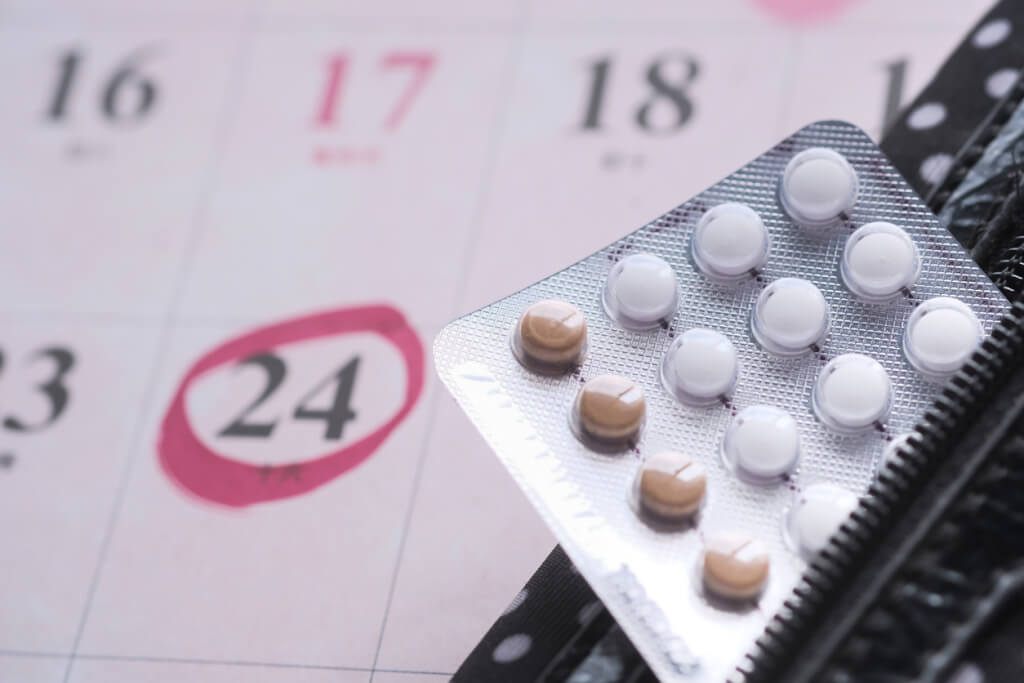Advertising Disclosure
How to choose the right birth control method for you

Birth control is an essential part of health care. Not only does it prevent pregnancy, but it can also provide many other health benefits. People have been using birth control for years, and there are more birth control options out there now than ever. But there are still so many people uninformed or misinformed about birth control. There is no universal birth control that works for everyone, and choosing birth control is often a process of trial and error. This process can get frustrating. With so many birth control options out there, how do you choose the right birth control method for you? We wanted to give you a better understanding of the contraceptives that are available. So we’ve dissected the pros and cons of various birth control methods. When choosing birth control, remember every body is different. Do research on what works for you, and talk to your doctor about how these birth control methods work.
The Intrauterine Device (IUD)
The intrauterine device, better known as the IUD, has become one of the most common birth control options out there. There are many benefits of this “set-it-and-forget-it” birth control. The IUD is a long-term, contraceptive that inserts into your uterus. According to Planned Parenthood, the IUD is over 99% effective and is “almost impossible to mess up.” IUDs are convenient for those who forget to take the pill, or who use condoms incorrectly. Depending on the type you choose, your IUD can protect against pregnancy for three to 12 years. But you can get it removed whenever you choose. If you prefer a hormone-free birth control, the Paragard (copper) IUD is a completely hormone free option.
Despite all the benefits, there can be negative side effects that come from the IUD. These side effects include cramping, back pain, irregular period and spotting between periods. After three to six months these side effects should go away. There are other risks that come with the IUD, but these are extremely rare. On the off chance you got pregnant with an IUD, this could cause an ectopic pregnancy, which is when a pregnancy grows outside of your uterus. Other risks include infection and the IUD slipping out or moving. Also, it’s important to note that this birth control method does not protect against STDs
The birth control shot
The Depo-Provera shot is a birth control method that is 99% effective when taken on time. The depo shot is a hormonal injection that prevents unplanned pregnancy for three months. This means about every 12 to 13 weeks, you have to get the injection. Many people consider the shot to be convenient since you take it only four times a year, especially is you don’t want any sort of implant. The hormone injected is progestin, which prevents pregnancy by stopping ovulation and increasing mucus buildup around your cervix’s opening. The depo shot can also lower the risk of cancer in your uterus and ectopic pregnancy, and it could make you get your period less.
Even though the shot is 99% effective, this is only if you take the injection perfectly. Typical use, when a woman doesn’t take the contraceptive exactly as prescribed, lowers the effectiveness to 94%. Some people find the need to go to the doctor’s office every three months inconvenient. But you may be able to get the shot from your doctor or health center to administer yourself at home. Other side effects of the shot include a nausea, weight gain, sore breast and depression. These side effects should go away two to three months after your body gets used to the shot. Like the IUD, the shot does not protect from STDs. Remember, it could take you up to 10 months after stopping the depo shot to get pregnant.
The birth control patch
The birth control patch is a transdermal contraceptive that sends hormones into your body through your skin. The patch sticks to you arms, lower back and another part of your body.Tthe estrogen and progestin that goes into your bloodstream helps prevent pregnancy. Though it prevents pregnancy, it does not protect against STDs. Unlike the pill, you don’t have to worry about the patch every day. But you do have to change it once a week. This is another contraceptive that is 99% effective with perfect use, but typical use lowers its efficiency rate to 91%. On top of preventing pregnancy, the patch can also help ease acne and menstrual cramps. It may lighten your period and make it more regular. It can also prevent bone thinning, ovarian cancers, and infections in your ovaries, fallopian tubes and uterus.
The patch is less reliable for those over 198 pounds, and smokers over 35 shouldn’t use the patch. The side effects from the patch include nausea, headaches and sore breast, but they don’t happen to everyone that uses this contraceptive. Because of the estrogen in the patch, there are some more serious risks, but these are very rare. These risks include blood clots, liver tumors, heart attack, stroke and, rarely, death.
The birth control pill
According to the National Center for Health Statistics, the birth control pill is one of the most common form of birth control used by people ages 15 to 49. The pill is the contraceptive with the most research out there, and has been in use since the U.S. Food and Drug Administration (FDA) approved it in 1960. The pill contains hormones that prevent you from getting pregnant by stopping ovulation. Stopping ovulation means sperm can not fertilize an egg. The pill comes in a pack, and for maximum effectiveness you take one a day. When taken a prescribed, it is 99% effectiveness, but because many forget or miss days, realistically the pill is 91% effective. Some things the pill can help or reduce include acne, premenstrual syndrome (PMS) and cysts in your breasts. Unlike other options, you can get pregnant right away when you decide to stop taking the contraceptive pill.
The pill is an attractive option for many people because it’s simple and effective, but others find the need to take it every day a major inconvenience. If you’re a forgetful person or feel like the pill is a hassle, set-it-and-forget-it contraceptives like the IUD might be better for you. Like other contraceptives, the pill comes with the typical side effects that usually go away in two to three months. The side effects are spotting between periods, nausea, headaches and sore breasts. Some studies have linked the pill to depression and a change in sexual desire. Make sure to note this form of birth control does not prevent STDs.
The birth control arm implant
The birth control implant is a hormonal form of contraceptive. In the U.S., the implant goes by the brand name Nexplanon. It releases the progestin hormone to prevent pregnancy (but not STDs). The implant is a tiny, thin rod about the size of a matchstick that implants into your arm. This contraceptive can protect you from pregnancy for up to five years. The progestin hormone thickens the mucus of your cervix, which prevents sperm from swimming to your egg. The hormone can also stop your egg from exiting your ovaries altogether. Nexplanon is as effective as sterilization and the IUD. The fact that you can forget about the implant once its inserted helps the effectiveness stay at 99%.
Besides the effectiveness, the privacy aspect of the implant is a major benefit. Once it’s implanted, there’s no trip to the pharmacy for a pill or the doctor’s office for a shot. Nexplanon can also ease your periods significantly. In fact, one in three people with the implant stop getting their period after a year. Another benefit is the implant only has one hormone. Aside from progestin, other contraceptives contain estrogen which those with certain health issues can’t use.
Negative side effects of Nexplanon include the typical contraceptive symptoms like nausea, headaches and breast pain. On rare occasions, the implant can get infected. Or it can migrate from the initial site, making it difficult for your doctor to find. But the most common side effect is spotting in the first six to 12 months.
The birth control vaginal ring
Another contraceptive option is the vaginal ring. This birth control method is small, flexible ring inserted into your vagina. It prevents pregnancy by releasing a low dose of hormones into your body. The ring comes in two options: NuvaRing and Annovera. You should use both types of rings on a schedule for maximum effectiveness. The NuvaRing lasts up to five weeks before it needs to be replaced, while the Annovera ring lasts up to a year. You can leave the Annovera inserted for 21 days, and removed for a week. After the ring-free week, you can put the Annovera back in. With perfect use, the ring is 99% effective. But because of user slip-ups and mistakes, the ring is generally 91% effective. Other benefits include reduced acne, eased menstrual cramps and lighter periods.
With the vaginal ring’s benefits comes its side effects. This contraceptive can cause nausea, sore breasts and bleeding between periods, but this goes away once your body adapts to the ring. Using the ring may also cause a slight increase in vaginal wetness. Other rare risks include blood clots, heart attack, toxic shock syndrome and stroke.
Condoms
Condoms are the one of the most common used forms of birth control. This is a contraceptive that not only prevents pregnancy but also protects you from STDs. Condoms are small, thin pouches made of latex, plastic or lambskin that cover the penis during sex. Condoms catch semen, which prevents sperm from entering your vagina and fertilizing an egg. Due to user error, condoms are about 85% effective. This means 15 out of 100 people who use a condom during sex will get pregnant each year. Often, people use condoms along with another contraceptive. This is because condoms add an extra layer of protection in case your other birth control method fails.
For the most part, condoms have zero side effects. For many, the biggest con to condom use is the need to use one every time you have sex, as opposed to contraceptives you “set and forget.” Some people may be allergic to latex, but for that there are non-latex condoms available.





